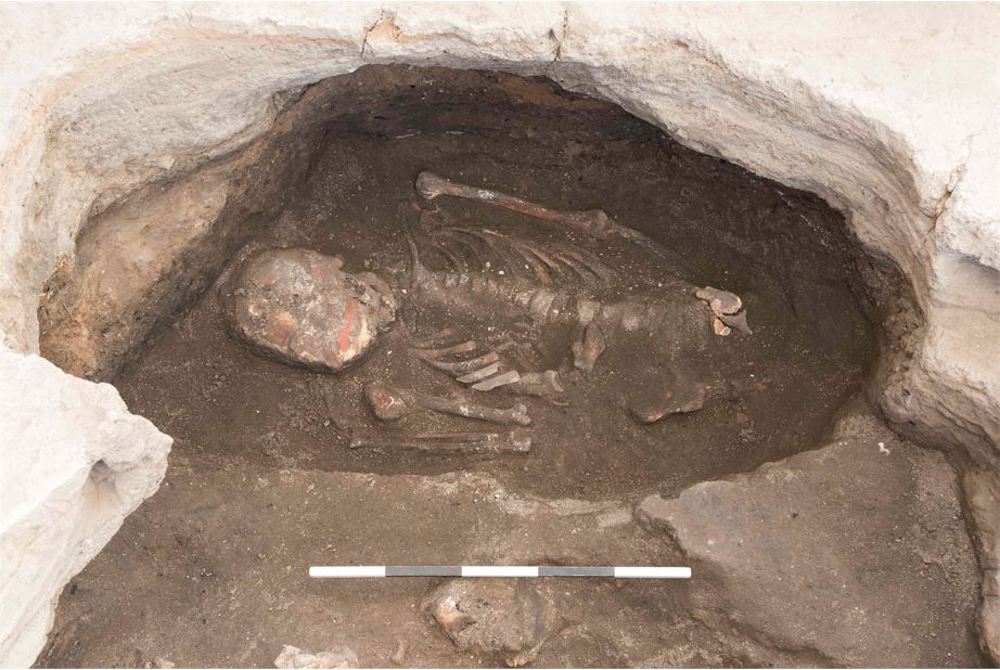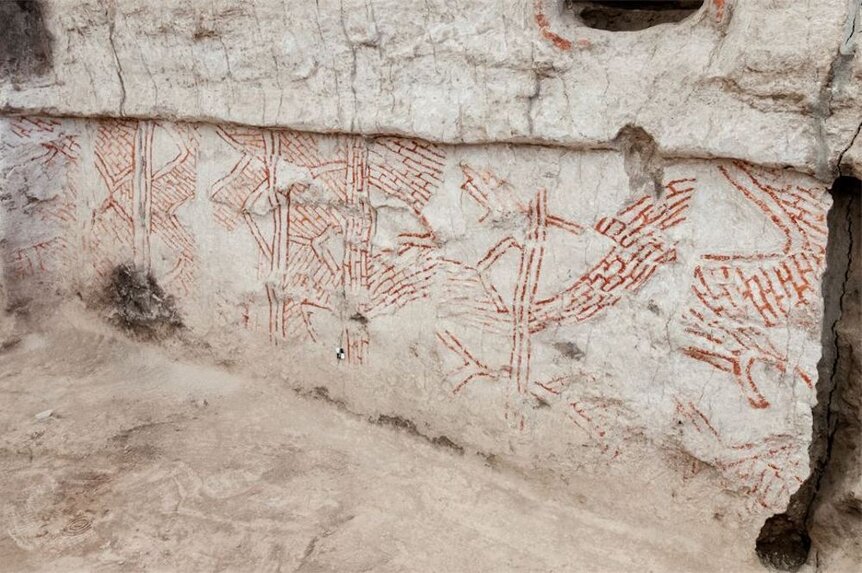Create a free profile to get unlimited access to exclusive videos, sweepstakes, and more!
Bone canvas: Ancient humans painted and passed around the remains of their dead
Paint me like one of your Turkish bones.

Ritual treatment of the dead, either through burial ceremonies or other funerary activities is often seen as a signal of self-awareness and interpersonal relationships in animals, which of course includes humans. Finding death rituals in non-human animals can be tricky, but it does happen. Apes, elephants, dolphins, and some birds have all been observed either watching over the bodies of the deceased or otherwise treating them in some socially meaningful way.
Humans, of course, take this relationship with the dead to a level not seen in other animals. Certainly, our relationship with the dead has evolved over time and a critical step in that evolution was recently uncovered in the ancient city of Çatalhöyük, in modern-day Turkey. Çatalhöyük is thought by some to be the world’s oldest city, dating back approximately 9,000 years. The people there lived in houses made of mud bricks and engaged in unusual funeral rites involving the painting of both bodies and houses.
Eline Schotsman from the PACEA laboratory at the University of Bordeaux, and colleagues, were examining human remains at the site to better understand the use of pigments in funeral rituals at Çatalhöyük. Their findings were published in the journal Scientific Reports.
The majority of the deceased in this community were simply buried and left in the ground, not unlike the way we bury our dead today. Some, however, received special treatment. A small portion of the dead, about 6 percent, were painted with various pigments. It’s unclear why some individuals received this treatment while most did not.
“This is the beginning of social differentiation, but we’re not sure why some were painted. It isn’t based on age, or sex, or specific families. At the moment, we don’t really have an answer. We think it was a kind of social memory,” Schotsman told SYFY WIRE.
We can think of the rituals as similar to the way modern humans might keep mementos of lost loved ones in their houses as a way of triggering memories of the deceased. The people of the time didn’t have photographs or other visual means of remembering, so they used pigments.
In addition to painting the dead, they also painted their houses, and the number of domicile paintings lines up with the number of painted remains, suggesting they were done at, or around, the same time. Adding pigment to the remains and then adding the same pigments to your house offers a visual and tactile connection to the dead which remains even after the body is buried.
“Blue and green colors were used for women and children only, which is quite special. Cinnabar was only used for males and only found as a head band. Ochre was used for everyone,” Schotsman said.
There’s also evidence that burial wasn’t necessarily permanent. Researchers found indications that bones were sometimes removed from the grave and kept in the community for a time. They’d be passed around and these secondary or tertiary funeral rituals often included the painting of houses and addition of pigment to the remains or the burial site.
The fact that these activities were not evenly distributed across individuals might be an early example of social inequality which evolved over time until it reached its modern form. It’s interesting to consider that relationships as complex as racial, sexual, or economic inequality might have gotten their start with stripes of paint applied to the head.
It lends a little more weight to the way we inter and celebrate our dead. There’s no telling how the difference between cremation, standard burial, or a mausoleum might trickle into the future and influence the way our descendants live.
Maybe we should all just slide our bodies into a peat bog and call it a day.



























